The IURC-China programme held today its 2nd thematic webinar, the Urban Planning on Innovation District. More than 30 participants from Barcelona, Liuzhou, Beijing, Yangzhou and Xiamen took part. This webinar is a follow up activity to deepen the long cooperation between Barcelona and Liuzhou, two of the IUC pilot cities. The webinar presents the concept, the execution, and its impacts of the innovation district 22@Barcelona, the overview of the Liuzhou urban planning as well as a case study in Xiamen.
MS. Alexandra Lehmann, the Attaché from EU Delegation to China, sent her greetings and expressed her appreciation of the commitments of the local governments and the triple helix stakeholders. She stated that IURC-China is an important part of the overall EU actions to support cities in addressing global challenges and is here to ensure the committed IUC cities and regions, like Barcelona and Liuzhou, continue to foster sustainable urban development and promote cross-regional and cross-national learning.

Carles Crosas Armengol, Lecturer from Barcelona School of Architecture, Universitat Politècnica de Catalunya – Barcelona Tech, gave his thoughts on “Linking Innovation Districts and Urban Regeneration”. He presented three approaches to urban planning, which are “recycle misused urban fragments”, “re-mixing the city” as well as “identity and authenticity versus globalization”. He pointed out that the reduction of mobility and carbon emissions is the key issue to achieve sustainable development goals and innovation districts shouldn’t be specialized areas but a good urban mixedness. Besides, Social identification, citizens’ memories, and cultural heritage should not be overlooked in urban design projects. In addition, he shared the insights of urban development of Paris, Zurich, Copenhagen and Barcelona.
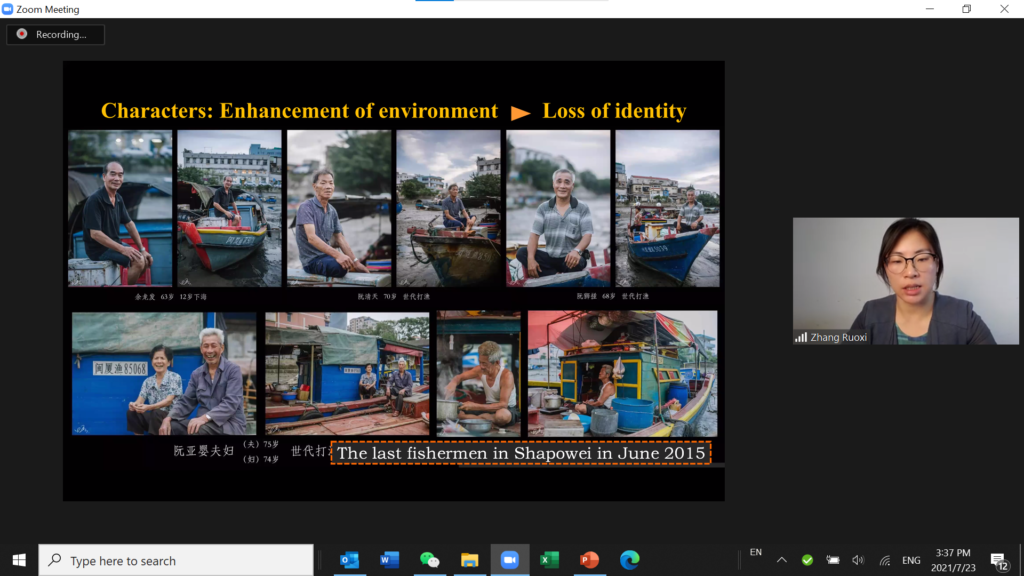
Associate Professor ZHANG Ruoxi from Deputy Director of Department of Urban Planning of Xiamen University presented an overview of the development of innovation districts in China and the case study of Shapowei District in Xiamen. She argued that over the past twenty years, demolition and reconstruction happened in many Chinese cities. However, she pointed out, with the changes of the society and policy, the urban regeneration process is also changing during the different development stages, and Shapowei is one of the cases.
Between 2003 and 2016, Shapowei was offered various regeneration plans, yet none of which was able to be successfully implemented, due to the lack of comprehensive and effective public participation. In August, 2016, a new plan took the relationship between “people” and “community” as a starting point, which built a platform for discussion among the local government, the community, the groups of interests, the media, and other stakeholders. This approach reached a great consensus among them. All agree that the protection of traditional culture is the most important core value. And “adding catalyst”, “cooperation”, and “stimulating innovation” are the three pathways to promote the cultural-oriented urban regeneration.
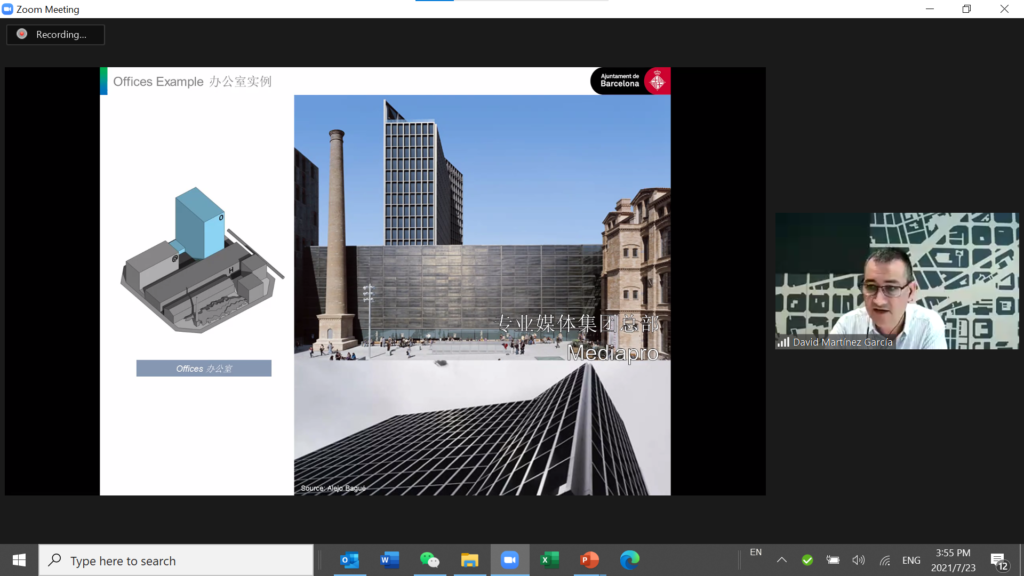
Mr. David Martínez, General Manager of the Municipal Institute of Urbanism from Barcelona City Council, shared his experience in the Urban Regeneration Process of 22@ Barcelona Innovation District. Firstly, he presented the 3 concepts, namely the complexity, the mixture, and the density, applied to the 22@ plan, the transfer of 200 hectares of obsolete industrial land in a central part of the city into a knowledge economy. Then he pointed out that the clustering strategy, putting different stakeholders in the same place to connect and create synergy and innovation is very important. What is more, he mentioned that the developed land was originally almost all private and the new activities, run by private sector, would be placed only in the 70% of it. The rest 30% will be given for free to the city council for allocating the social housing, public space and facilities. By gaining the public land, this regeneration plan has transformed the landscape of the land use. Some great examples of mixture from the economic sector, office, hotel, university, infrastructure, public space and facility were shared as well.
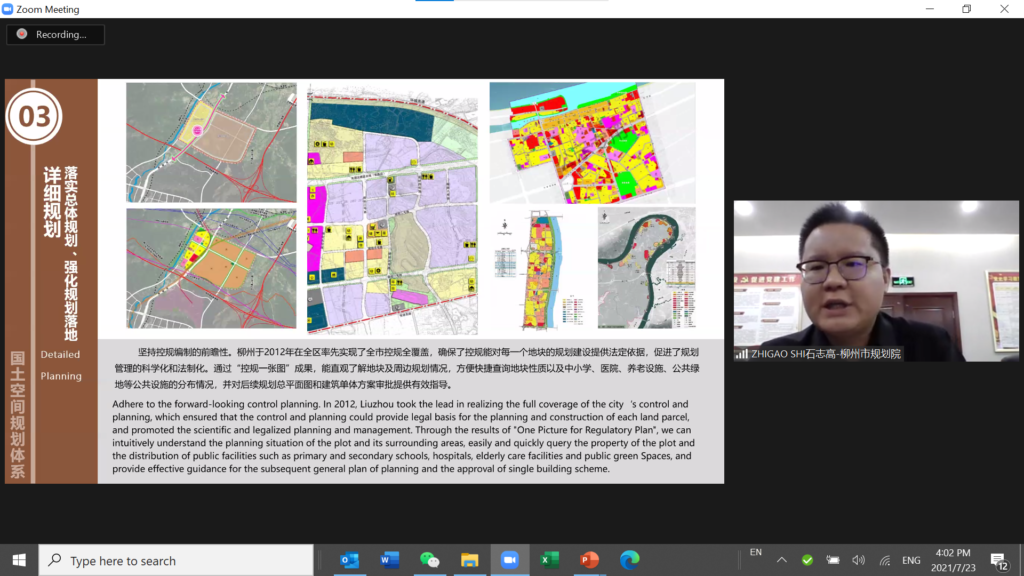
Director SHI Zhigao from Institute of Urban and Rural Planning and Design of Liuzhou City started his presentation with an introduction of Liuzhou’s scientific land planning system, whose Master plan is to define the city’s approach and strategic objectives, with details aiming to enhance the execution. Besides, the urban design is to improve the rationality of planning decisions and the special plans to focus on people’s livelihood and urban characteristics. After than he showcased the 4 focuses of the sustainable urban development in the 14th Five-Year Plan. They are to improve the 15-minute community life circle, to enhance urban construction via innovative management, to protect the city landscape features and to upgrade the protection capabilities for natural resources.
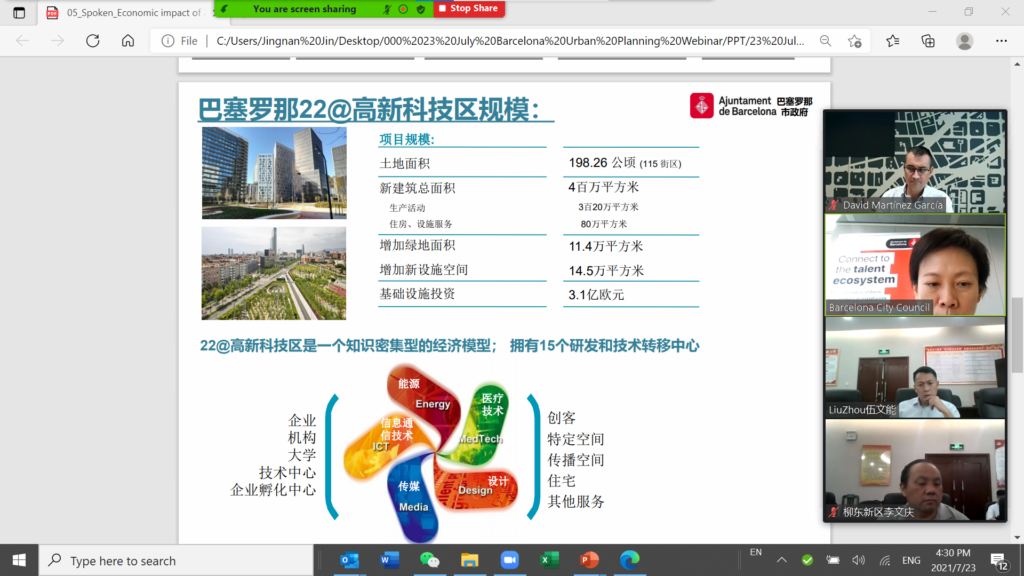
Ms. Veronica Tan from Barcelona Promotion Agency delivered her keynote speech on the Impact of 22@ in Barcelona’s economy & entrepreneurial ecosystem. She began with the profile of Barcelona, a city of 1.6 million residents, more than 170,000 companies, the sites of 9 universities and the 5th European start-up hub. She further pointed out that the 22@ regeneration project started 20 years ago and has so far attracted 4,500 companies. It is a knowledge intensive economy and 15 R&D & technology transfer centres are based here. The 5 major fields of its economy are ICT, Media, Design, Med Tech and Energy, through which make a great mixture of companies, institutions, universities, technology centres, incubators, entrepreneurs, specific spaces, residence, and other services is made and able to effectively attract talents. The future proposal for @22 North sees the mixed-use blocks as an answer to sustainability and a sandbox to test and develop new processes and construction materials. She concluded with the statistics showing the biggest impacts of 22@Barcelona are in the categories of retails & hospitality, professional, administrative & finance, as well as information and communication.
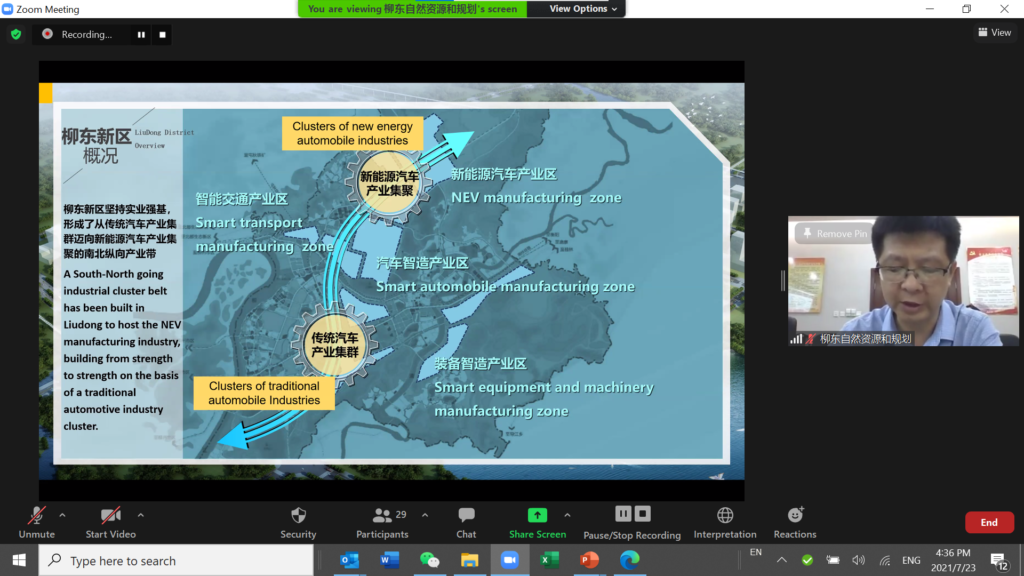
Director SHEN Lin from Department of Planning, Construction and Environmental Protection of Liudong New District delivered his speech on the Urban planning of Liudong New District in 14th five-year plan and the cooperation vision with EU. He firstly presented an overview of the Liudong New District, focusing on the transformation from traditional automobile industry to the NEV manufacturing industry and the major industrial upgrading of STI industry. Then he pointed out that Liuzhou is a national green industrial park and has excellent infrastructure and facilities. Fully leveraging the power of innovation and growth momentum, Director SHEN argued that Liudong set its goals in the 14th five-year plan, namely, to build the core area of modern smart manufacturing city, to create the pilot zone of regional cooperation, and to construct new town featuring industry-city integration. Based on an open Liuzhou, the New District would like to strengthen the industrial cooperation with the Great Bay Area, the trade cooperation with ASEAN and the technological cooperation with EU.
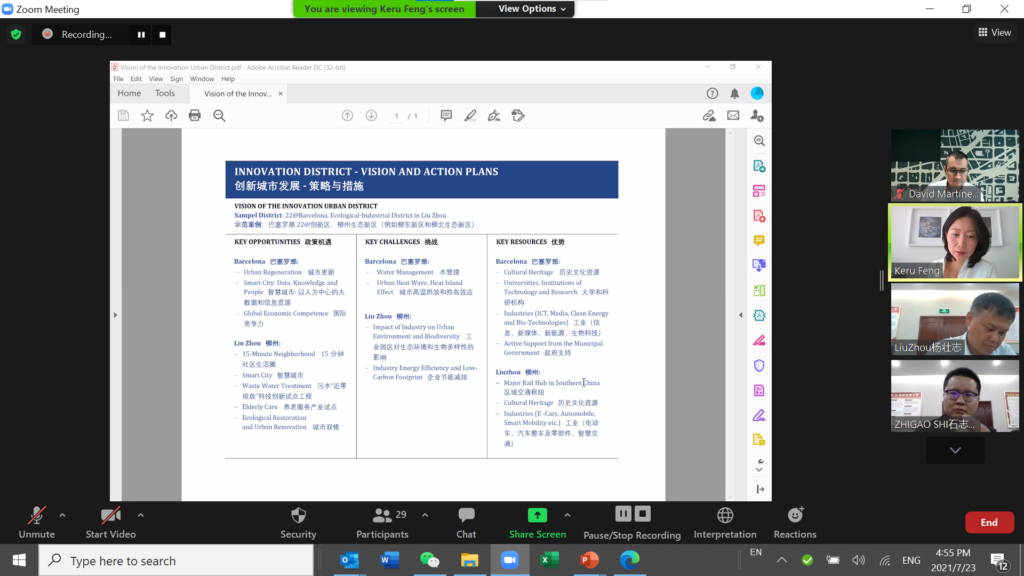
In the end, Ms. FENG Keru, the IURC-China Expert on Architecture & Urbanism, hosted the roundtable discussion. During the exchanges, Barcelona identified the good ecological and investment environment is key to the success. Rather to help citizens find jobs, it is wiser to provide them training. On the other hand, Liuzhou advocated to develop new industries in the future, including electronic biotechnology, big Data, new energy and 5G.
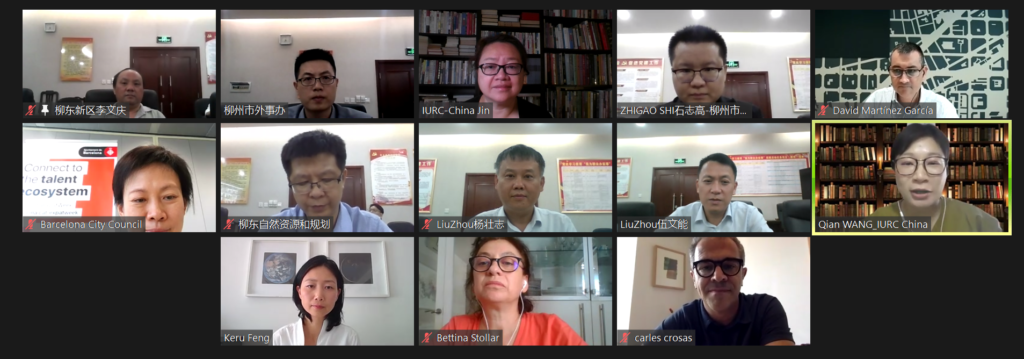
Presentations:
01_CarlesCrosas_ Linking Innovation Districts and Urban Regeneration
02 ZHANG Ruoxi_ Innovative Regeneration of Shapowei District in Xiamen
03_David Martínez_22@Barcelona Innovation District the Urban Regeneration Process
04_SHI Zhigao_An Overview of Urban Planning in Liuzhou
05_Veronica Tan_Economic impact of 22@ in Barcelona Economy & Entrepreneurial Ecosystem
06_SHEN Lin_The Urban Planning for Liudong New District in the 14th Five-Year Plan
